De Staatsopera van Hannover en Marco Goecke zijn onderling overeengekomen Goeckes contract als balletdirecteur met onmiddellijke ingang te beëindigen. Dat laat het theater vandaag weten. Een vertrouwensvolle samenwerking met Goecke in een leidinggevende functie is ondenkbaar voor het theater nadat Goecke een kritische journalist met hondenpoep besmeurde. (meer…)
Het Nederlands Dans Theater (NDT) schort de positie van Marco Goecke als associate choreographer op. Dit laat het gezelschap weten in reactie op de open brief van een groot aantal theatercritici die vandaag op Theaterkrant verscheen.
De open brief was een reactie op de verklaring van NDT naar aanleiding van het hondenpoep-incident tussen choreograaf Marco Goecke en theatercritica Wiebke Hüster.
Het gezelschap stuurde vanavond de volgende verklaring:
NDT laat weten dat we de positie van Marco Goecke als associate choreographer opschorten. Dat houdt in dat hij het komend seizoen geen nieuw werk meer zal creëren. We zullen het uitvoeren van Marco Goeckes bestaand repertoire, gemaakt in samenwerking met de dansers en het team van NDT, voortzetten.
NDT keurt de gebeurtenis die op 11 februari in Hannover plaatsvond tussen Marco Goecke en een recensent van Frankfurter Allgemeine Zeitung in alle toonaarden af. Als we dat niet duidelijk genoeg hebben gesteld, dan spijt ons dat. Ook NDT ziet deze gebeurtenis als een aanval op de persvrijheid.
NDT draagt graag bij aan een constructieve dialoog over de relatie tussen journalisten en medewerkers die betrokken zijn bij artistieke producties. Wij zien dit als een bredere discussie tussen de kunstsector en haar recensenten.
foto TAKE ROOT van NDT, Rahi Rezvani

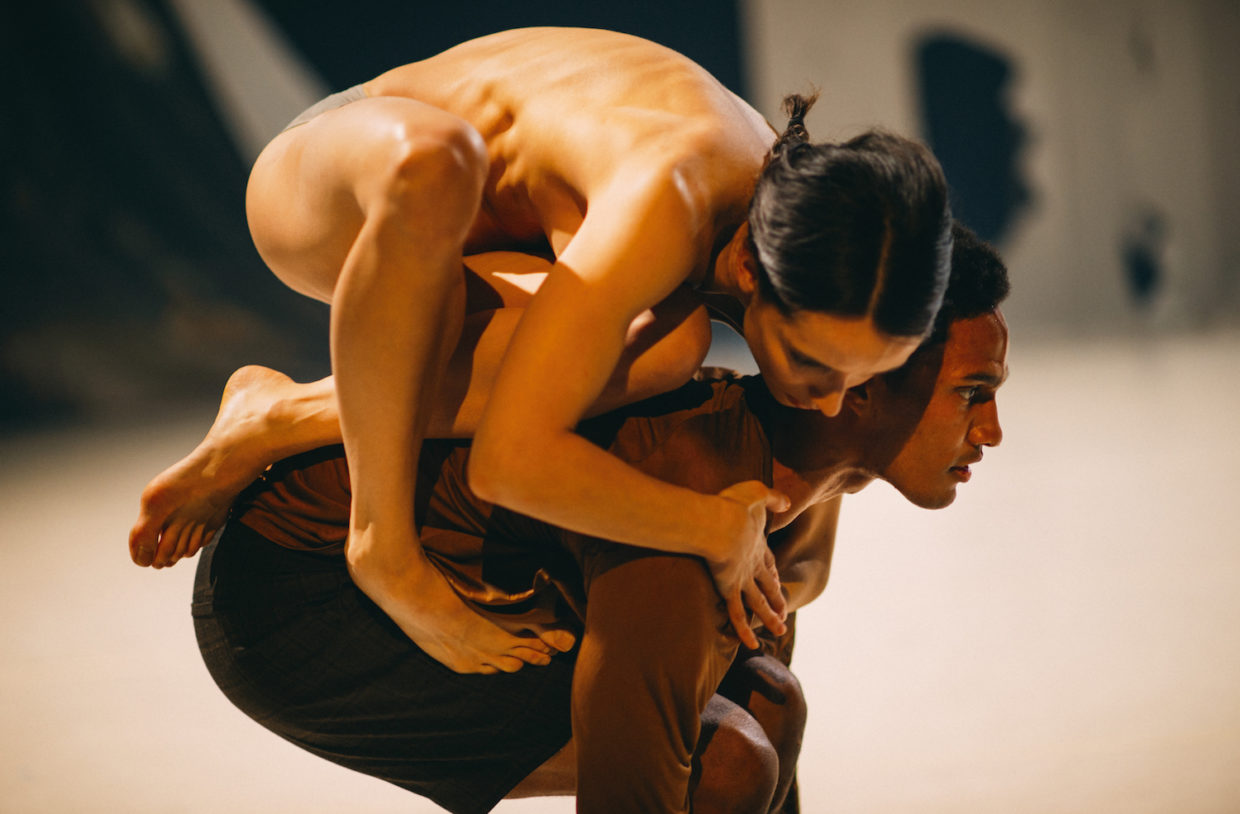





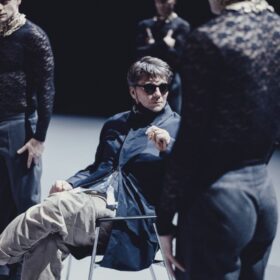
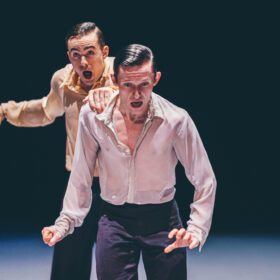
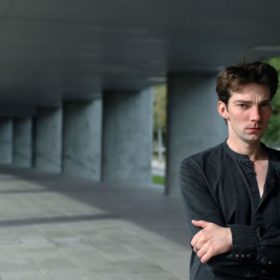
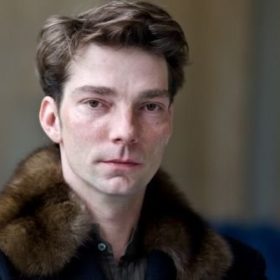


Yes.
I am wondering about the claim that Goecke’s assault is an attack on the freedom of press. Clearly, the assault raises a lot of questions about Goecke’s understanding of violence, art, criticism, privilege, gender etc. To be clear: I find his assault was many negative things and not justified. He is prosecuted for his actions, but the attorney’s claim will not be attack on the freedom of press. In the German constitution this freedom is granted in relation to state censorship, partially as a reaction to the experiences during the Third Reich. I don’t see how the assault of one individual on another individual is an attack on the freedom of the press. I see how it might frighten some critics to write freely about the works they review. But in my eyes this concerns individual ways of dealing with fears of imagined threats in the future, which got nourished by Goecke’s assault. But the freedom of press? This is not a rhetorical question, I would really appreciate if someone here could enlighten me. I am addressing this forum after Moos van den Broeck advised me to do so as a reaction the same question raised by me in one of her threads there. If you want to write in Dutch, that is fine, I can read it.
That’s a very interesting question Martin. A climate or culture of intimidation (of journalists, politicians, artists) can lead to self-censorship. Strictly speaking, from what I understand freedom of press means a lack of active state interference (also defined as intimidation by agents of the state) into the enquiries and publications of journalists. But ‘freedom from’ isn’t equivalent to ‘freedom to’, the positive freedom of actually being able to operate in an open and safe context without having reason to fear having shit smeared onto your face.
However, it could be argued I think, that within established democracies as the German an Dutch ones, we are justified in expecting more from our governments: that there should be at least a political best-efforts commitment (as a government cannot guarantee individual derangements) to ensure that this vital atmosphere of trust and encouragement can thrive.
So in short I think Goeckes action is not a direct attack on the freedom of press, but normalisation of actions such as his can contribute to the erosion of trust an openness, and indirectly impact press freedom, becaus inadequate government response (de facto lawlessness or absence of enforcement) could be construed as failure to protect it.
Thanks, Thomas Lamers. Maybe you can explain to me why this wasn’t explained in the first place. To claim an attack on the freedom of press in an open letter to a dance company that is asked to take from their repertoire the artistic works of a choreographer who committed a crime is, in my eyes, taking out the journalistic sledgehammer. This in turn can have an intimidating effect on artists who wish to have a nuanced discussion with critics about how to engage with each other in non-violent and non-toxic ways, including not only smearing dog poo in someone’s face but also ways of speaking or writing. Both, dance artists and critics expose themselves through media that are important to them – dancing and writing. Vulnerability exists on both sides. In my eyes, the claim of an attack on journalistic freedom comes across as an attempt to conceal the writers’ vulnerability by using legal and nonphysical means. I am happy to be proven wrong or convinced otherwise.
Beetje vermoeiend die mensen die het blijven opnemen voor Goekhe. Laten we ze vooral niet blijven voeren…
@Ken, ik heb niet de indruk dat iemand dat hier doet.
@Martin, I’m wasn’t involved in this open letter (nor am I a critic), maybe Marijn Lems or one of the other signatories could enlighten us about that? And I’m not sure whether I follow your final point about concealment of vulnerability.
@Martin en Thomas
Dear Martin, I think the reason for putting it in the context of an attack on press freedom is explained in the open letter itself: namely, it takes place in an era when more and more people are attacking journalists in Europe. That only the state could curtail press freedom is not how the concept of “press freedom” is used in practice: the international Press Freedom Index takes all sorts of effects and influences into account to arrive at a rating (see https://rsf.org/en/index). (Indeed this is related to the distinction between ‘freedom from’ and ‘freedom to’ that Thomas mentions).
We did not ask the NDT to remove Goecke’s works from the repertoire; we asked them to get him to sincerely apologize for his act, and in the case of his continued refusal, to follow through with consequences. Goecke was removed from his position as an associate choreographer, and I personally think that is the right response; after all, in this way the work of the countless other artists who contributed to In The Dutch Mountains is not lost, but instead it has been made clear that Goecke’s behavior makes him unfit for a representative position in an arts organization.
If there is a “chilling effect” on the willingness of artists to speak critically about the work of critics, that has never been our intention. We will not tolerate violence, but non-violent appraisals of our work are of course more than welcome, and indeed a vital part of how critics grow. But when a red line into physical violence is crossed, I will make no apologies for refusing to engage with someone’s work in the future until amends are made. And that’s the thing: beyond the act of violence itself, it was Goecke’s refusal to show any real remorse for his actions that necessitated our radical response.
Beyond all this, I’m curious as to what you mean by ’the claim of an attack on journalistic freedom comes across as an attempt to conceal the writers’ vulnerability by using legal and nonphysical means.’ I don’t precisely get what you’re saying here? Because I totally agree that we’re vulnerable too, and I embrace this vulnerability: personally, I am always open to criticism of my work, and frequently enter into public discussions about it.
First I don’t support Goecke’s action. It’s quite a leap to respond with physical aggression on someone’s journalistic work that happened in writing, readers are still left to their own agency of making opinion, you still have choice to step around some dog-poo on the ground, however feaces smeared in your face doesn’t leave you any room, can bodily harm, It’s a pre-mediated attack on their body, their person and ultimately their work of writing for the free press, or independent press publishing their (creative) writing. Future fear should not be the space for art-critics to do their work. Just as artists art-critics work from their subjectivity, which is fragile. Government instruments should give some backing support for people doing their fragile work out in public, prevent harm and toxic working environments. How this will work out in court, depends I guess on the judges. To me it seems more than a heated dispute between two individuals, but also not more than one incident in the performing arts field that is local and not of global systemic nature in our field. Goecke as a protester made notorious attention, that should not represent the way theater-makers handle their public communication.
Yet I don’t always get it why trowing a pie on a politician is treated as a direct attack on democracy, It makes sense protecting a public figure that does risky work for the public and prevent normalization of such directed physical attacks even if non-harmful. But if words are not at disposal for the protester to be heard, the protester is desperately looking for means. There is no space to critic the art-critic in the newspaper, attacking with animal bodily liquids is definitely a bad idea, Goecke could better respond with love, like produce a public letter written from the poo of his dog in that very newspaper. Newspapers and other public press should really consider space for artists to respond to their received critiques, help the artist to make dialogue. Both are needed for critical dialogue. Too the critic should sometime consider attending workshops or rehearsals from the artists or field they write about.
As a thought experiment I imagined to reverse the roles of the event and see how the reading would be of the event, (in terms of criticism, art, gender, power etc). Which could be something like “female audience member smeared dog-poo on male director’s face after seeing his stage work”. Would some then consider the work as a successful provocative work of art, triggering the audience to go as far as trowing dog-poo on the male director? And would this then be an attack on the freedom of art-making or an act of censorship?
The whole thing exposes the discrepancy between art critic and artist and from the position they work from. Receiving a written judgement, words can be physical too, words are made of flesh, can hurt, words can be feces on your face you can’t smear off easy and affect careers. I have witnessed artists receiving “poo” on their artistic work through written judgements that reached far more (reading) audience which is in huge disproportion to the actual audience that see the (stage)work in person, adequate audience that can produce their own opinion and hearsay. On the flip-side I have seen artists making jumps in their self-esteem and careers with just one all-star positive critique, having grandiose effects.
The art-critic thus holds a critical responsibility to both artist and audience, but mostly audience and is of high influence how spectator-ship is being practiced. If an art-critic writes something that reads like a bad consumer review of a stage work, audience get entrained to look at the stage in such manners. I believe a premiere at best should be a joined complicit practice of maker and spectator of believing in a work that is yet to be shared and understood, in the same precariousness the work of art was made. Both are responsible of opening spaces. A spectator’s practice also needs to invest in order to gain, critics have a responsibility to think alongside with an artist, do homework and open their work, even if it’s not in their liking, it’s not a reason to close down the potentiality around the work and limits the audience interpretation (or willing to attend) that is yet to come. Same as to our project (Soiled by Michael Turinsky) Hüster wrote quite a destructive review on our opening premiere last fall, basically reducing it to one boring hour of something that doesn’t look like dance, meaninglessly looking at dancers “just” belly flopping on a slippery floor. For a wheelchair choreographer with cerebral palsy where the upright body and a stable ground is not an option to work from. It would be nice to see how she could open interpretations beyond her taste how this work could tell us something about the diversity of the human condition and how diverse bodies can be and their way of moving, especially being it mixed abled/disabled work of art.
I think Hüster’s critic on Goecke’s premiere wasn’t all negative. There is appreciation, detail and care in her work, offering thoughts for the spectator, it was not of polemic nature or personal activism of what art should be worth to watch.
I think Goecke has all the rights to be fascinated by the self-composing live of water, the way we can look endlessly at the moving sea, or into a bonfire for no specific reason, witnessing the amplification of pure movement. Maybe an artwork coming from a life-long devoted dancer that commits to anything that moves, allowing movement in its own odd logic to exist without claiming aboutness. Experiencing boredom is one of the inclusive states we create, maybe profound boredom tells something in regards to expectations, of time, of structure, expectations of the dancers, like coming from the incredible NTD. Maybe boredom is a learned behavior how we treat the things we look at, in a modern society that is all about productivity and efficiency. Maybe profound boredom is true happiness left in its pure state, slows down time and expectations, making us down to earth. The article flirts with the idea it’s more for an audience of fish rather than an audience of humans. Finally a critic that sees a choreographer to make work that is not directly aimed for the human condition, audience could bring their pets and petfish to watch together. It was a useful review. Goecke should be using the poo for good luck of the shows yet to come, although “merde” is actually horseshit (the more audience would come the more horseshit would accumulate in front of the theatre where the horses are)
I think there are mending needs for critic and maker to meet and exchange, including folks of the public press, theater houses, dance companies, performers, audience, etc Which festival is next up?
@Tian
Thank you for your thoughtful contribution! Lots to unpack here, I’ll try to organise my thoughts.
‘Newspapers and other public press should really consider space for artists to respond to their received critiques, help the artist to make dialogue. Both are needed for critical dialogue. Too the critic should sometime consider attending workshops or rehearsals from the artists or field they write about.’
I agree with all of that. I just wanted to add that making space for artists to respond is often not enough, because it’s obviously a tricky thing for an artist to publicly respond to a critique of their own work. So artists might need extra help to engage in such a discussion, such as a non-defensive attitude of the critic towards criticism of their work. An example of how *not* to do this appeared in The Guardian yesterday – film critic Peter Bradshaw completely blowing his top about a quite innocuous statement of Seth Rogen. (https://www.theguardian.com/film/2023/mar/09/good-film-reviews-bad-ones-seth-rogen)
‘The art-critic thus holds a critical responsibility to both artist and audience, but mostly audience and is of high influence how spectator-ship is being practiced. If an art-critic writes something that reads like a bad consumer review of a stage work, audience get entrained to look at the stage in such manners.’
This is the crux of everything to me. The art critic doesn’t have much of a responsibility to individual artists, but they do have a responsibility to art and art discourse. The art critic should always strive to deepen and enrich that discourse with their practice, that’s the art critic’s main responsibility in my view.
However, that does *not* mean that ‘critics have a responsibility to think alongside with an artist’. An art critic is not the ally of the individual artist, nor do they have any responsibility to ’think along’ with the artist. Some of the best arts criticism takes an antagonistic approach to the individual work, reading counter to the artist’s intention to open up the discussion about the work beyond what the artist had intended. The critic also doesn’t have a responsibility to whether or not audiences still want to see the work after reading a review – if I feel a work fails on all counts as an interesting experience, than it’s my responsibility to write that down, as long as I explain why that is. That might be destructive from the artist’s point of view, but that’s an unavoidable outcome of critics responding to your work honestly and with integrity.
However, obviously I agree that an art critic should take the context of a work into account when meeting it with their gaze (i.e. ‘do their homework’). Critics should definitely always keep learning, and developments in queer art, Black art, and mixed-abled and disabled art are at the forefront of those conversations. Thankfully, we live in an era where we are moving away from one ‘correct’ (white, cis, masculine, ableist, straight) way of looking at art, into a more diversified arts scene, and it is incumbent upon critics to keep developing their practice in response to these processes (while still staying true to their own core values about what art is).
And finally, I completely agree with this:
‘I think there are mending needs for critic and maker to meet and exchange, including folks of the public press, theater houses, dance companies, performers, audience, etc Which festival is next up?’
Annually (well, since last year) Theaterkrant and the Dutch Theaterfestival (at the beginning of September) organise a meeting between art critics and artists. Before that, I’m speaking with different parties and organisations about events that have the same aim. We will definitely share the details on this website once they have been hammered out!